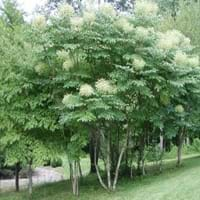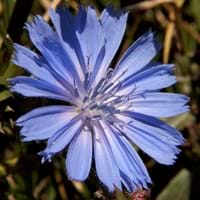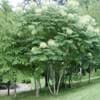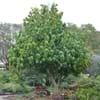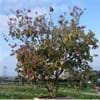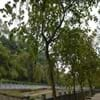Life Span
Perennial
Perennial
Type
Tree
Flowering Plants, Shrubs, Vegetable
Origin
Mid-Atlantic United States, Southeastern United States, South-Central United States, Texas
Mediterranean
Types
Not Available
Belgian Endive, Red Belgian Endive, Curly Endive (a.k.a. Frisee), Escarole, Radicchio (Chioggia) and Radicchio (Chioggia)
Number of Varieties
Not Available
Habitat
Dappled Shade, Shady Edge, Woodland Garden Secondary
Grassland, Mediterranean region, Wild
USDA Hardiness Zone
4-9
3-9
Sunset Zone
3a, 3b, 4, 5, 6, 7, 8, 9, 14, 15, 16, 17, 18, 19, 20, 21, 22, 23, 24
A1, A2, A3, H1, H2, 1a, 1b, 2a, 2b, 3a, 3b, 4, 5, 6, 7, 8, 9, 10, 11, 12, 13, 14, 15, 16, 17, 18, 19, 20, 21, 22, 23, 24
Habit
Thicket/Colonizing
Clump-Forming
Flower Color
White, Green, Ivory
Blue
Flower Color Modifier
Bicolor
Not Applicable
Fruit Color
Purple, Black
Brown
Leaf Color in Spring
Green, Blue Green, Dark Green
Green
Leaf Color in Summer
Green, Blue Green, Dark Green
Green
Leaf Color in Fall
Yellow, Green, Purple, Blue Green, Dark Green, Yellow green
Green
Leaf Color in Winter
Not Available
Green
Leaf Shape
bipinnate
Oblong
Plant Season
Spring, Summer, Fall, Winter
Summer
Sunlight
Full Sun, Partial Sun
Full Sun, Part sun
Type of Soil
Clay, Loam, Sand
Loamy, Sandy
The pH of Soil
Acidic, Neutral, Alkaline
Acidic, Alkaline, Neutral
Soil Drainage
Well drained
Well drained
Tolerances
Pollution, Soil Compaction
Not Available
Where to Plant?
Ground
Ground
How to Plant?
Cuttings, Divison, Seedlings
Seedlings
Plant Maintenance
Medium
Medium
Watering Requirements
Needs high amount of water
Keep the ground moist but not water-logged, Prefer drip-irrigation instead of Over-head watering, Requires regular watering, Requires watering in the growing season
In Summer
Lots of watering
Lots of watering
In Spring
Moderate
Moderate
In Winter
Average Water
Average Water
Soil pH
Acidic, Neutral, Alkaline
Acidic, Alkaline, Neutral
Soil Type
Clay, Loam, Sand
Loamy, Sandy
Soil Drainage Capacity
Well drained
Well drained
Sun Exposure
Full Sun, Partial Sun
Full Sun, Part sun
Pruning
Remove damaged leaves, Remove dead branches, Remove dead leaves
Cut or pinch the stems, Prune prior to new growth, Prune to stimulate growth, Remove dead or diseased plant parts, Remove deadheads
Fertilizers
All-Purpose Liquid Fertilizer
All-Purpose Liquid Fertilizer
Pests and Diseases
Aphids, Leaf spot, Mealybugs
Aphids, Loopers, Root rot, Viruses, Worms
Plant Tolerance
Drought
Drought
Flower Petal Number
Single
Not Available
Foliage Texture
Coarse
Medium
Foliage Sheen
Matte
Matte
Invasive
Sometimes
Sometimes
Attracts
Bees, Butterflies, Insects, Not Available
Butterflies
Allergy
Skin irritation
Not Available
Aesthetic Uses
Borders, Woodland margins
Not Used For Aesthetic Purpose
Beauty Benefits
Not Available
Not Available
Environmental Uses
Air purification
Air purification
Medicinal Uses
Alterative, Analgesic, Diaphoretic, Opthalmic
Cancer, Digestive disorders, Inflammation, Liver problems, Stomach pain
Part of Plant Used
Bark, Leaves, Root
Leaves, Root
Other Uses
Used as a potherb
Used as an ingredient in coffee
Used As Indoor Plant
No
No
Used As Outdoor Plant
Yes
Yes
Garden Design
Feature Plant, Foundation, Mixed Border
Not Available
Botanical Name
ARALIA spinosa
Cichorium intybus
Common Name
American Angelica Tree, Devil's Walking Stick, Hercules' Club
Blue daisy, blue dandelion, blue sailors, blue weed, bunk, coffeeweed, cornflower, hendibeh, horseweed, ragged sailors, succory, wild bachelor's buttons, and wild endive
In Hindi
Devil's Walking Stick
कासनी
In German
Teufelsspazierstock
Chicoree
In French
Walking bâton du diable
chicorée
In Spanish
Bastón del Diablo
achicoria
In Greek
Περπάτημα Stick διαβόλου
ραδίκι
In Portuguese
Vara andando de diabo
chicória
In Polish
Diabelski laska
cykoria
In Latin
Virgam diaboli
pancratium
Phylum
Magnoliophyta
Magnoliophyta
Class
Magnoliopsida
Magnoliopsida
Family
Araliaceae
Asteraceae
Clade
Angiosperms, Asterids, Eudicots
Angiosperms, Asterids, Eudicots
Tribe
Not Available
Cichorieae
Subfamily
Aralioideae
Cichorioideae
Number of Species
Not Available
Not Available
Importance of Devil's Walking Stick and Chicory
Want to have the most appropriate plant for your garden? You might want to know the importance of Devil's Walking Stick and Chicory. Basically, these two plants vary in many aspects. Compare Devil's Walking Stick and Chicory as they differ in many characteristics such as their life, care, benefits, facts, etc. Every gardener must at least have the slightest clue about the plants he wants to plant in his garden. Compare their benefits, which differ in many ways like facts and uses. The medicinal use of Devil's Walking Stick is Alterative, Analgesic, Diaphoretic and Opthalmic whereas of Chicory is Cancer, Digestive disorders, Inflammation, Liver problems and Stomach pain. Devil's Walking Stick has beauty benefits as follows: Not Available while Chicory has beauty benefits as follows: Not Available.
Compare Facts of Devil's Walking Stick vs Chicory
How to choose the best garden plant for your garden depending upon its facts? Here garden plant comparison will help you to solve this query. Compare the facts of Devil's Walking Stick vs Chicory and know which one to choose. As garden plants have benefits and other uses, allergy is also a major drawback of plants for some people. Allergic reactions of Devil's Walking Stick are Skin irritation whereas of Chicory have Not Available respectively. Having a fruit bearing plant in your garden can be a plus point of your garden. Devil's Walking Stick has showy fruits and Chicory has no showy fruits. Also Devil's Walking Stick is not flowering and Chicory is flowering. You can compare Devil's Walking Stick and Chicory facts and facts of other plants too.
